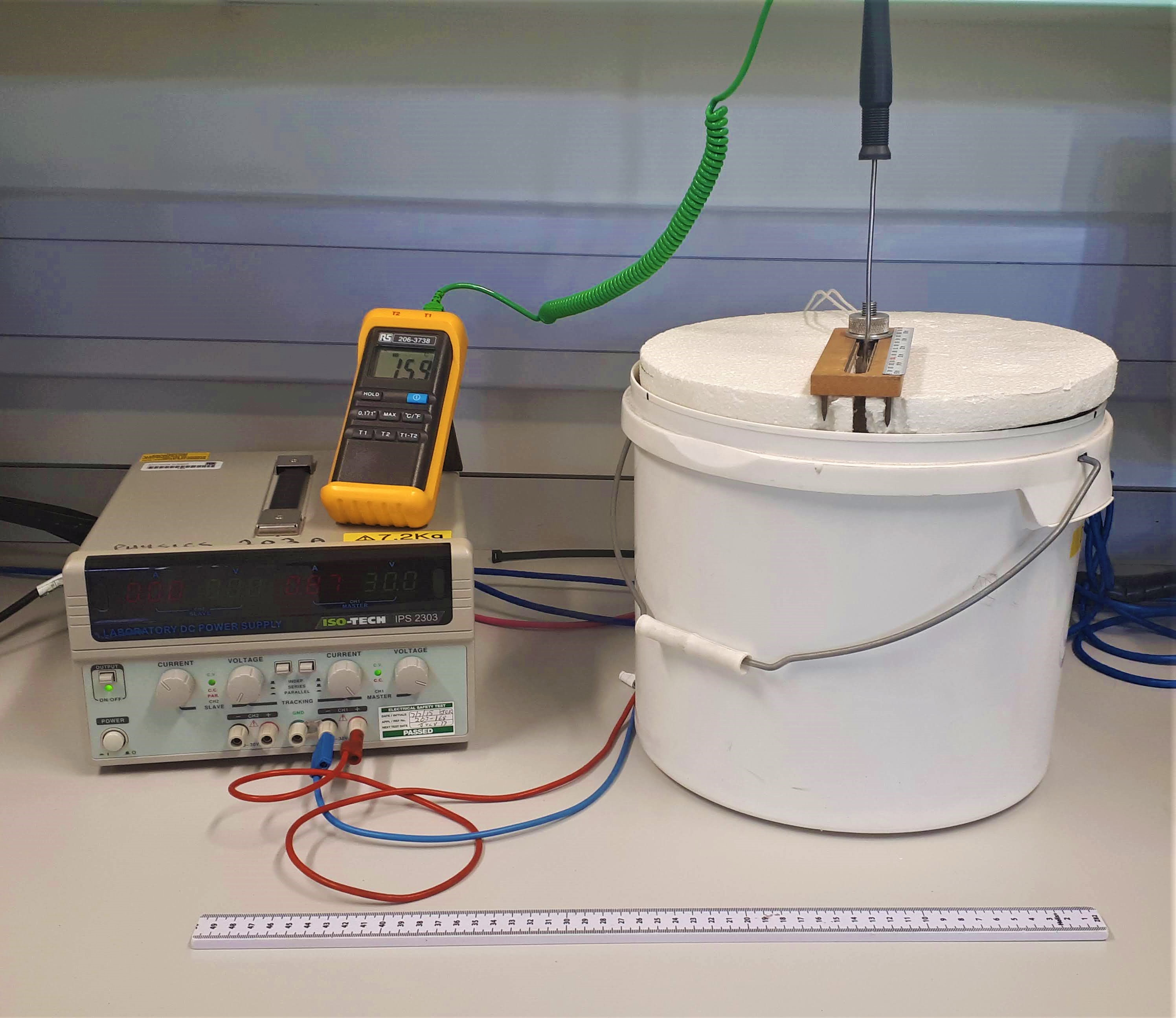- Home
- Semester and Timetable Information
- Study Physics
- Our Research
- Our People
- Careers and Alumni
- Seminars, News and Events
- Outreach and School Resources
- About the School
- What is Physics
- The Crawford Observatory
- Frequently Asked Questions
- MBH Conference
- UCC Futures Quantum & Photonics
- Supports
Heat Conductivity of Sand from a Cork Beach
Heat transfer is a common phenomenon encountered in many areas in daily life. It is an important subject in natural sciences and even more so in engineering and the field of environmental physics. Knowledge about heat transfer is essential for the various possible ways to cut down on energy use. For example, to economize on home-heating one has to optimize insulation, i.e. minimize heat transfer.
The most important heat transfer mechanisms are:
- Conduction
- Convection
- Radiation
In this particular experiment the first mechanism, conduction, is studied in some more detail.

A bucket of sand, which has been collected from a Cork beach, has a cylindrical heater pushed through the centre of it so the heater is buried vertically in the sand. Power is supplier to the heater so that heat is produced. It takes up to six hours for the sand to heat to appropriate tempertures for the experiment!
A thermocouple is an electrical device which produces a temperature-dependent voltage, which can then be calculated back to a temperature reading. In this experiment a thermocouple is pressed into the sand to read the temperature at various points. The thermocouple can be seen in the picture above as a metal bar protruding from a black handle which is connected back to the temperature display by a green cord. The temperture is measured at various depths along the radious of the bucket of sand. A wooden scale can seen in the picture, which allows the students to measure the distance out from the centre that they are measuring the temperature of.
The students use this data to confirm the theory of heat transfer for cylindrical geometry.
